Rise of the Asian megacity
Mass urbanisation, the increasing concentration of populations into towns and cities, is one of the defining characteristics of industrialised economies. By the middle of the 20th Century the two biggest economies, the USA and Japan, had created a new urban phenomenon: the megacity. By 2025, seven of the world's top ten megacities will be in Asia. Explore the growth of the megacity below.
Cities with over 10 million inhabitants
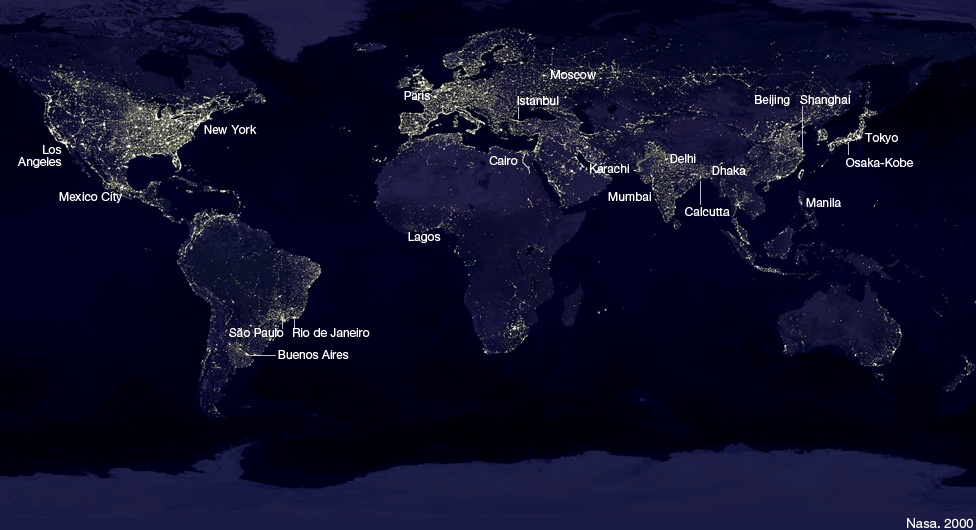
This image of the earth at night shows where the population of the world is crowding together into major urban areas. By the middle of the 20th Century this urbanisation had led to a new phenomenon: the megacity - an urban area with over 10 million inhabitants.
How Asia is leading the growth in megacities
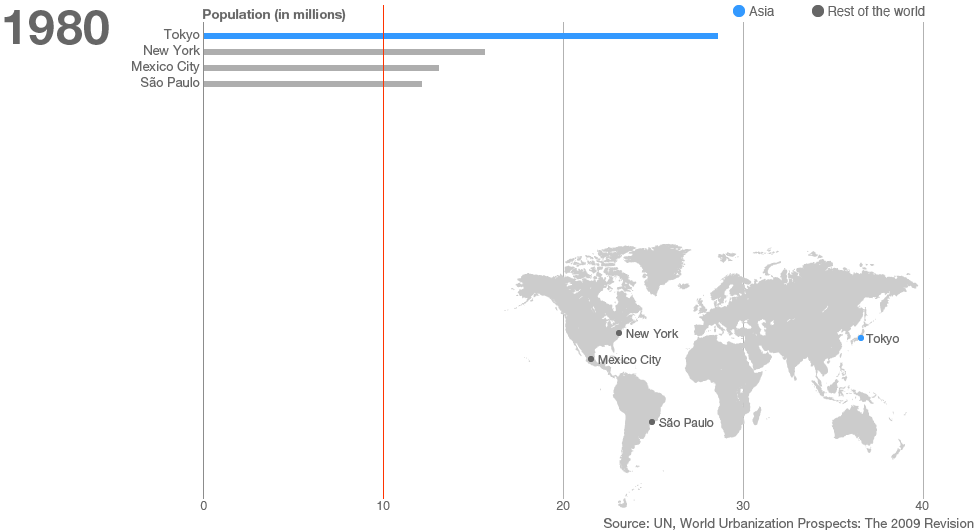
The first megacities were New York and Tokyo, and by 1980 Tokyo had almost twice as many inhabitants as New York. In Latin America, Mexico City and Brazil's Sao Paulo had now joined the list of megacities, after explosive population growth during the 1970s.
How Asia is leading the growth in megacities
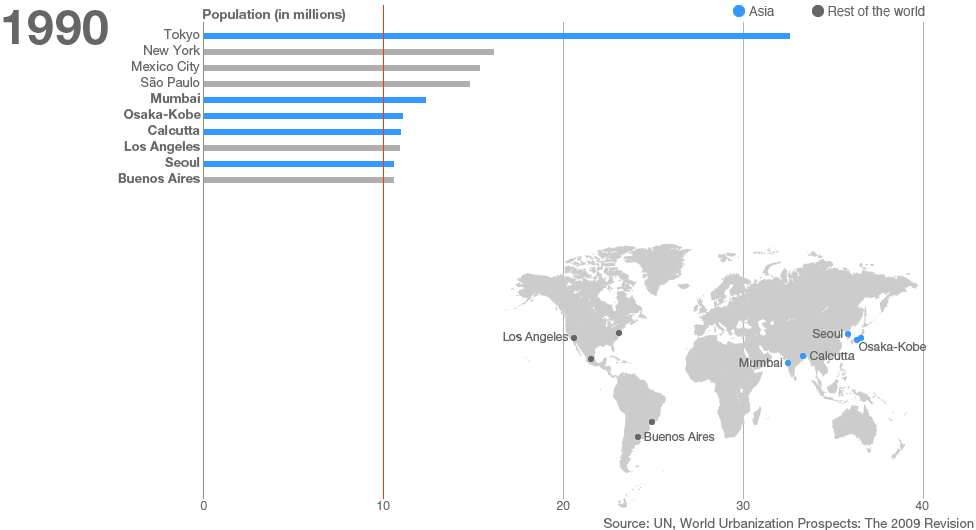
By the early 1990s, vast urban centres in developing countries were acting as engines for economic growth. Mumbai was the first megacity outside Japan and the number of megacities in Asia was now equal to the number in the Americas.
How Asia is leading the growth in megacities
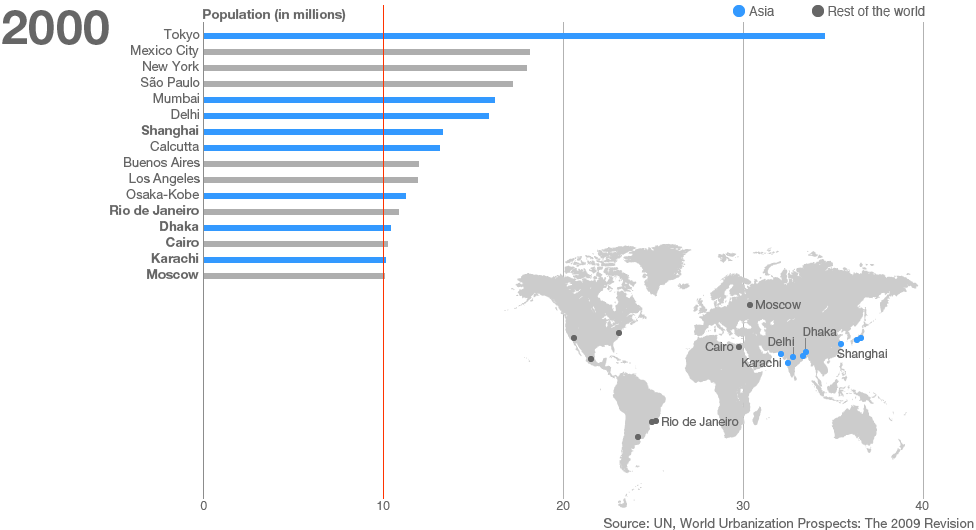
By 2000 Europe and Africa had their first megacities in Moscow and Cairo, but there were also another four megacities in Asia, including Karachi in Pakistan and Dhaka in Bangladesh. Asia now had more megacities than any other continent.
How Asia is leading the growth in megacities

By 2010 there were 21 megacities with Paris becoming the first in western Europe. Earlier in the decade, Delhi was growing at such a rate that its population increased by one and a half million people every two years. It quickly became the second most populous city in the world after Tokyo.
How Asia is leading the growth in megacities
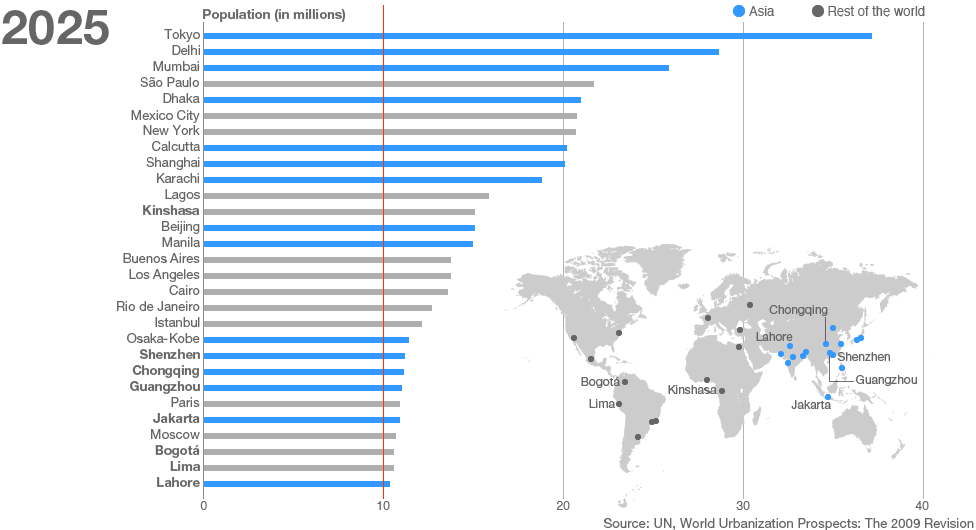
By 2025, Chongqing, Guangzhou and Shenzhen, will take the number of megacities in China to five. In India, Mumbai is predicted to become the third most populous city in the world with 25.8 million inhabitants. The nine biggest cities are likely to have populations of over 20 million people.
~RS~q~RS~~RS~z~RS~56~RS~)

 Australia shock at asylum tragedy
Australia shock at asylum tragedy